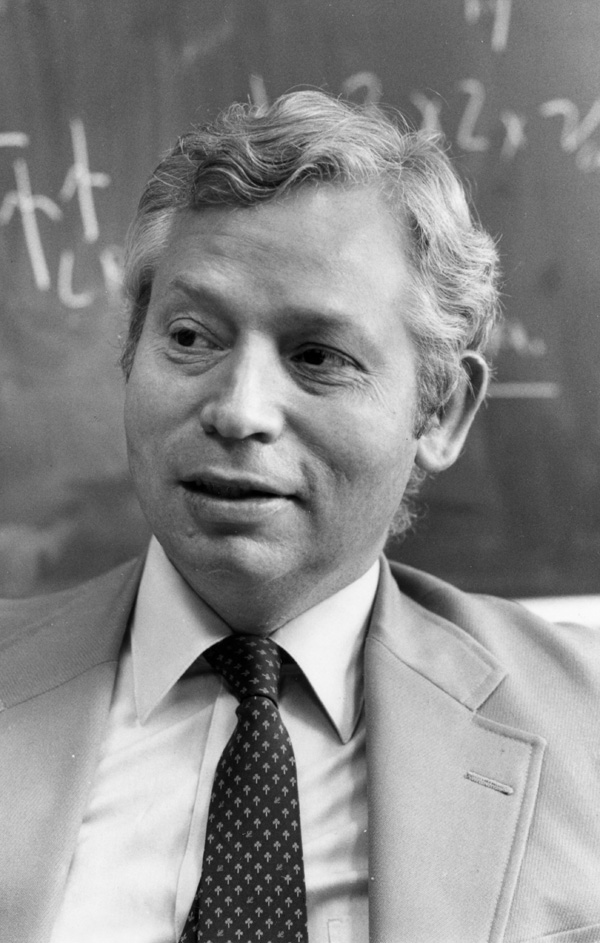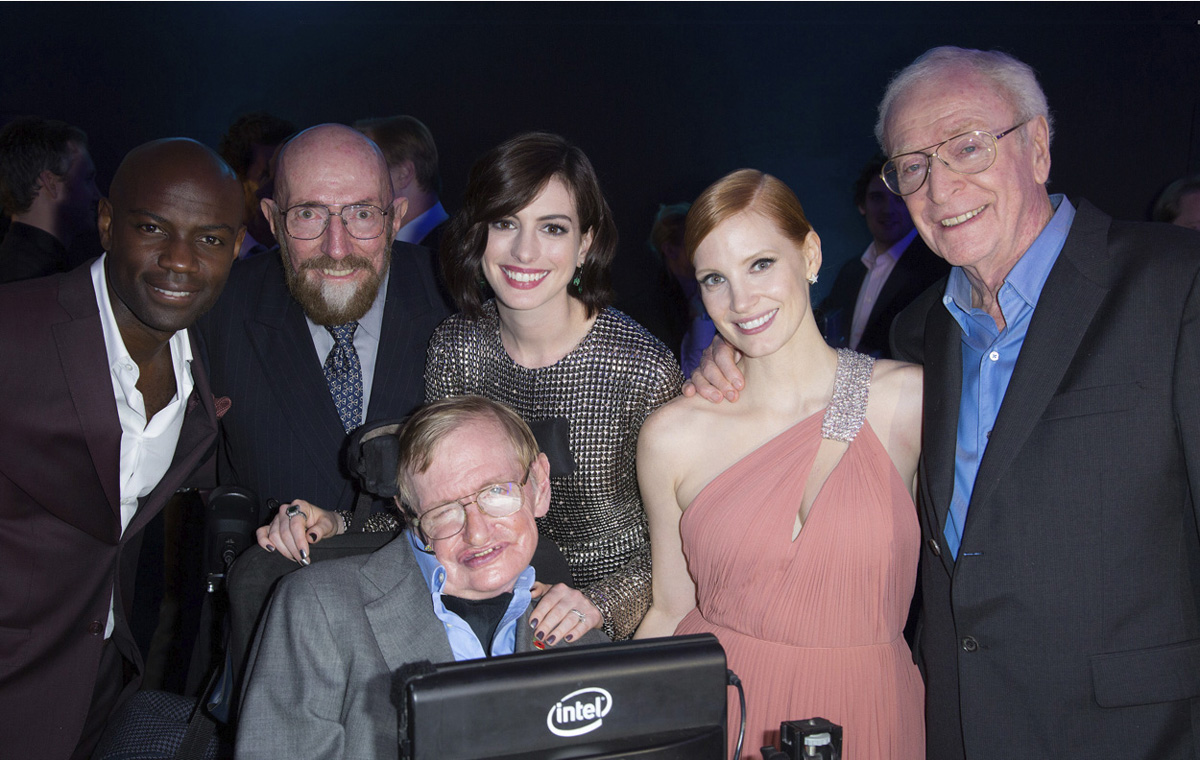Physics 689: The deepest concepts in physics








This class is appropriate for all students in physics or astronomy.
It will meet Tuesday and Thursday, 5:30-6:45 p.m., in Room MPHY 107.
Instructor: Roland E. Allen
Room M213 Mitchell Institute Building
Office hours: Monday, Tuesday, Wednesday 3-4 p.m.
Course (catalog) description: The central principles underlying essentially all fields of physics will be described in the most basic way, but at an advanced level. The topics include path integral and canonical quantization, in a relativistic or nonrelativistic context; high energy physics in and beyond the Standard Model; the essentials of general relativity and its application in astrophysics and cosmology; and some related advanced topics in condensed matter physics, AMO (atomic-molecular-optical) physics, nuclear physics, and astronomy and astrophysics. This is not a formal theory course, but one emphasizing the deepest principles inferred from experiment and observation.
Motivation: This course is intended to fill the gap between the required graduate courses, which stop short of a truly fundamental understanding of physics, and the more specialized courses, which are incomplete in a different way. Two of a vast number of examples: It is possible for a condensed matter student to learn the models of the spin-orbit interaction that are so useful in understanding both new materials (like topological insulators) and those long established in technology (like compound semiconductors) without ever learning the actual origin of the spin-orbit interaction. And it is possible for an astronomy student to think of black holes, which have become enormously important in many contexts, as being represented by only the Schwarzschild metric – when all real black holes have angular momentum and therefore require the Kerr metric. More importantly, and more broadly, it is possible for students never to appreciate the unity of physics – with the ubiquity of bosonic condensates being only one of many examples – and to never see fundamental tools outside their specialties that may prove very useful in their future careers. In principle, all graduate students could take a series of courses in quantum field theory, many-body theory, particle physics, general relativity, cosmology, condensed matter physics, quantum optics, nuclear physics, etc. – but this is not a realistic possibility, and the present course will provide a less detailed but useful exposure to all of the most fundamental physics for students in all areas.
The course will be drawn from many sources, with no required textbook.
Evaluation: 25% homework assignments, 50% two exams, 25% for paper and related talk at end. The two exams will be at 7:30-10:30 p.m. on Thursdays. The homework will consist of two problems per week, over basic ideas. The exams will also cover only very basic ideas. The papers and related talks should be relevant to current research, and should be clear to a nonexpert. The papers should not exceed 12 pages and the talks are limited to 15 minutes, with the last 3 minutes reserved for questions.
Overview: All of modern fundamental physics shares a foundational structure with certain key concepts, as listed in the syllabus below. These most basic concepts can only be understood at a relatively advanced level, but once they are mastered there is a clear (although technically demanding) path downward to applications spanning essentially all branches of physics (condensed matter, AMO, high energy, nuclear, astro, …). This course will provide a skeleton outline of the main ideas, with the most central derivations and physical content provided in the most elegant ways known to the instructor, but skipping the details and nuances (and fully rigorous derivations) that are covered in more specialized treatments. The presentation of the course material will be original, but based on the treatments in many standard sources.
_______________________________________________________________________________________________________________
Exams: 7:30-10:30 p.m. on Thursdays.
Week 1: Symmetries of classical fields, and conservation laws via Noether’s theorem
Symmetries of quantum fields, and conservation laws in the Heisenberg picture
Week 2: Canonical quantization of relativistic fields
Descent to canonical quantization of nonrelativistic fields, with spin-dependent interactions
Week 3: Path-integral quantization in quantum mechanics
Path-integral quantization of quantum fields
Week 4: Nonrelativistic perturbation theory (Feynman diagrams) from canonical quantization
Relativistic perturbation theory (Feynman diagrams) from path-integral quantization
Week 5: Electroweak SU(2)xU(1) gauge theory
QCD SU(3) gauge theory and the Standard Model of particle physics
Week 6: Beyond the Standard Model – grand unification of nongravitational forces
Beyond the Standard Model – supersymmetry
Week 7: General relativity and the Einstein field equations
Applications of general relativity in astronomy and astrophysics
Week 8: General relativity in neutron stars and black holes
General relativity in cosmology
Week 9: Basics of nuclear structure and dynamics
Nuclear astrophysics and nuclear processes in cosmology
Week 10: The quark-gluon plasma, nonperturbative QCD, and the QCD phase diagram
Superfluidity in condensed matter physics and astrophysics
Week 11: Exotic forms and potential mechanisms of superconductivity
Exotic magnetic and structural phases in materials
Week 12: Frontiers of quantum optics
The potential for quantum computing, information, and communication
Week 13: Topological and quantum materials, and their potential applications
Future technologies based on advanced physics
Week 14: Special topics as chosen by students, with student presentations
__________________________________________________________________________________________________________________________________________
The following are all required components of a course syllabus.
Prerequisites: advanced undergraduate or introductory graduate courses in mathematical physics, quantum mechanics, classical mechanics, and electrodynamics.
Grading scale (course average): 85-100 A, 70-84 B, 50-69 C, 40-49 D, 0-39 F.
Student rule 10: http://student-rules.tamu.edu/rule10
Student rule 7: http://student-rules.tamu.edu/rule07. Work can be made up with a university excuse (for illness, injury, activity on university authorized activity list, etc.).
ADA statement: The Americans with Disabilities Act (ADA) is a federal anti-discrimination statute that provides comprehensive civil rights protection for persons with disabilities. Among other things, this legislation requires that all students with disabilities be guaranteed a learning environment that provides for reasonable accommodation of their disabilities. If you believe you have a disability requiring an accommodation, please contact Disability Services, currently located in the Disability Services building at the Student Services at White Creek complex on west campus, or call 979-845-1637. For additional information visit http://disability.tamu.edu.
Academic Integrity Statement: The Aggie Honor Code is “An Aggie does not lie, cheat, or steal or tolerate those who do.” For more information, refer to the Honor Council Rules and Procedures on the web at http://aggiehonor.tamu.edu.







